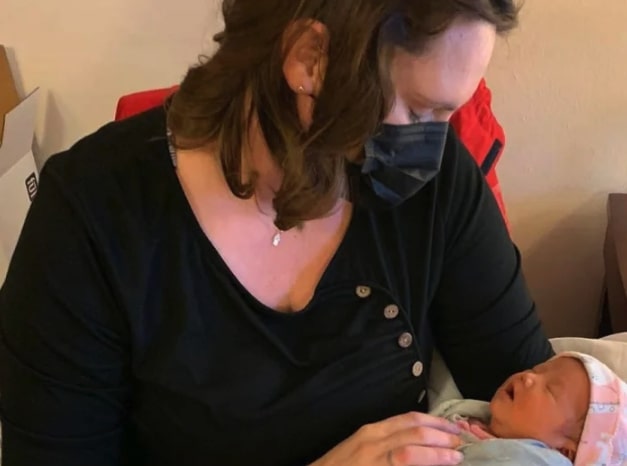Ashley Greene discovered in 2012, while pregnant with her second child, that a friend was working as a surrogate for a family. Green was motivated when she saw the impact her buddy was making in the lives of others.
Greene, 38, from Iowa, now has three biological kids and has delivered four surrogate kids, or surrogate babies, including a pair of twins. She has no intention of stopping.
Greene and her husband, Chris, decided they were done having children when their third child reached four. She has been pregnant six times in the last 11 years; according to Greene, the emotional and physical toll of being pregnant as a surrogate varies from one’s own pregnancy. She also claimed she didn’t have the same symptoms, such as morning sickness, while she was pregnant with her second kids.
She said that she still felt big and huge and uncomfortable, but the experience was different for her mentally knowing that she did not keep the baby in the end. There was a sense of relief, understanding that the parents would love this baby.
According to the American Society for Reproductive Medicine’s guidelines, anyone interested in becoming a professional surrogate must have completed having their own biological children, be between the ages of 21 and 42, have a healthy body mass index, be financially stable, and go through a thorough background check and identity verification, among other requirements.
Greene had to assure her spouse that she backed her decision while she discussed it with her medical doctors. Though he had doubts at first, he grew at ease once he realized that gestational surrogacy ensured he had no DNA connection to his family. He became more open to the idea after seeing Greene’s first set of intended parents display their joy and thanks when they met.
To ease their biological kids into the situation, the parents emphasized that these infants were not their siblings.
Many of the intended parents Greene has worked with have had tragic losses or are unable to conceive using other means. She began by working with an agency to develop a profile that matched her and the intended parents’ interests. She chose to look at additional surrogate profiles before making a decision about her future surrogate pregnancy.
One of the most crucial decision considerations for her was the sort of connection the parties want after the kid arrives, as well as how to establish those limits ahead of time. Her second set of parents, for example, for whom she carried twins, still give her updates and images of the twins. Her final delivery, on Christmas Eve, was more transactional, and the interaction terminated postdelivery.
Though Greene tries to retain a feeling of extended family by creating relationships with the family, she wants to normalize the fact that any kind of contact with the intended parents is OK as long as everyone understands the arrangement.
The standard remuneration for a normal surrogacy may vary between $45,000 and $60,000 per pregnancy, according to Greene, but there are extra expenditures such as medication-start fees, injection fees, heartbeat-confirmation fees, and medical-clearance fees. Because each voyage is unique, the actual payment varies. Compensation is often divided into equal installments throughout the course of the pregnancy (for example, every four weeks), and Greene advises against committing to “lump sums” at the conclusion of pregnancies since delivery is never certain.
The base compensation a surrogate receives is to offset discomfort, she explains. If a surrogate receives an embryo transfer with a heartbeat and then loses the baby four weeks later, they will receive a prorated payment for that time.
Greene has no intention of stopping anytime soon, as long as her medical provider agrees.
She expressed that she is willing to be a surrogate until someone tells her she can’t. This is her passion, and she intends to keep assisting individuals in creating beautiful families for as long as possible.






